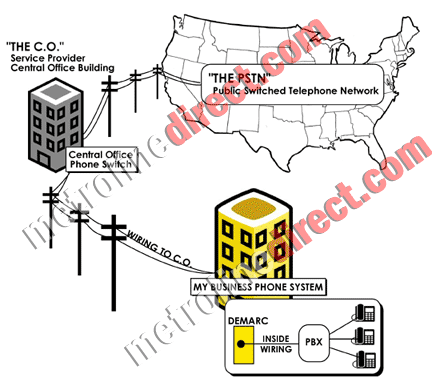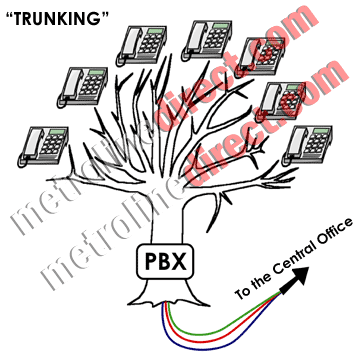What is an analog telephone line?

A simple analog telephone line is a voice circuit historically made from copper wire that runs from your local phone company's Central Office (C.O.) building to your business location. The central office houses telephone switching equipment that connects you to the Public Switched Telephone Network (PSTN). This is sometimes referred to as the local loop. Once the analog telephone line is installed, someone can call the phone number that you have subscribed to, and the phone company can connect the call to you.
Good points to remember about analog telephone lines are that
-
One phone number is associated with one line
- One line can handle one conversation at a time; when the line is in use, a busy signal is heard
How do analog telephone lines work?
Analog telephone lines transmit voice as electrical signals. When you speak into the handset of your phone, the microphone converts the sound waves into analog electrical waves. These waves propagate over the telephone line to their destination. The receiving phone then converts the the electrical signals back into sound waves through the speaker of the handset.
Other names for analog telephone lines
Analog telephone lines are referred to in a variety of ways. Here are some of the terms you may hear from an installation professional or a service provider
- C.O. Line – Refers to the fact that the line connects you to the Central Office
- Copper Line – Refers to the historical medium that carries analog signals, namely copper
- POTS Line – Plain Old Telephone Service
- Analog Line – Refers to the analog electrical signal used to transmit voice
The Trunking Concept

Sometimes people incorrectly refer to a single analog telephone line as an analog trunk. Trunking refers to the concept that many users can access the telephone network through sharing a set of lines instead of each receiving one individually. Think of a tree trunk: all of the branches share one trunk and through this connection are all granted access to the nutrients in the soil. Similarly, every phone extension in your office has access to the public switched telephone network through a smaller set of analog telephone lines.
If you have a small office (1 – 3 phones), each telephone can be connected to the local loop and then receive its' own phone line. However, if your office is growing and you need to connect many phone extensions to the PSTN, it just doesn't make financial sense to pay for separate lines to each phone. In most circumstances every employee does not need to be on the phone at the same time. Instead, by using the trunking concept you can reduce the amount of telephone lines you pay for while servicing every phone in your business. In fact typical business phone systems are configured in ratios of 3-4 telephone lines for every 8 phone extensions.
When should I choose analog telephone lines for my business?
Analog telephone lines should be considered for small and medium sized businesses that require up to 15 incoming lines. When more than 15 are required, a digital line (e.g. T1/PRI) is usually a better choice in terms of both cost and features.